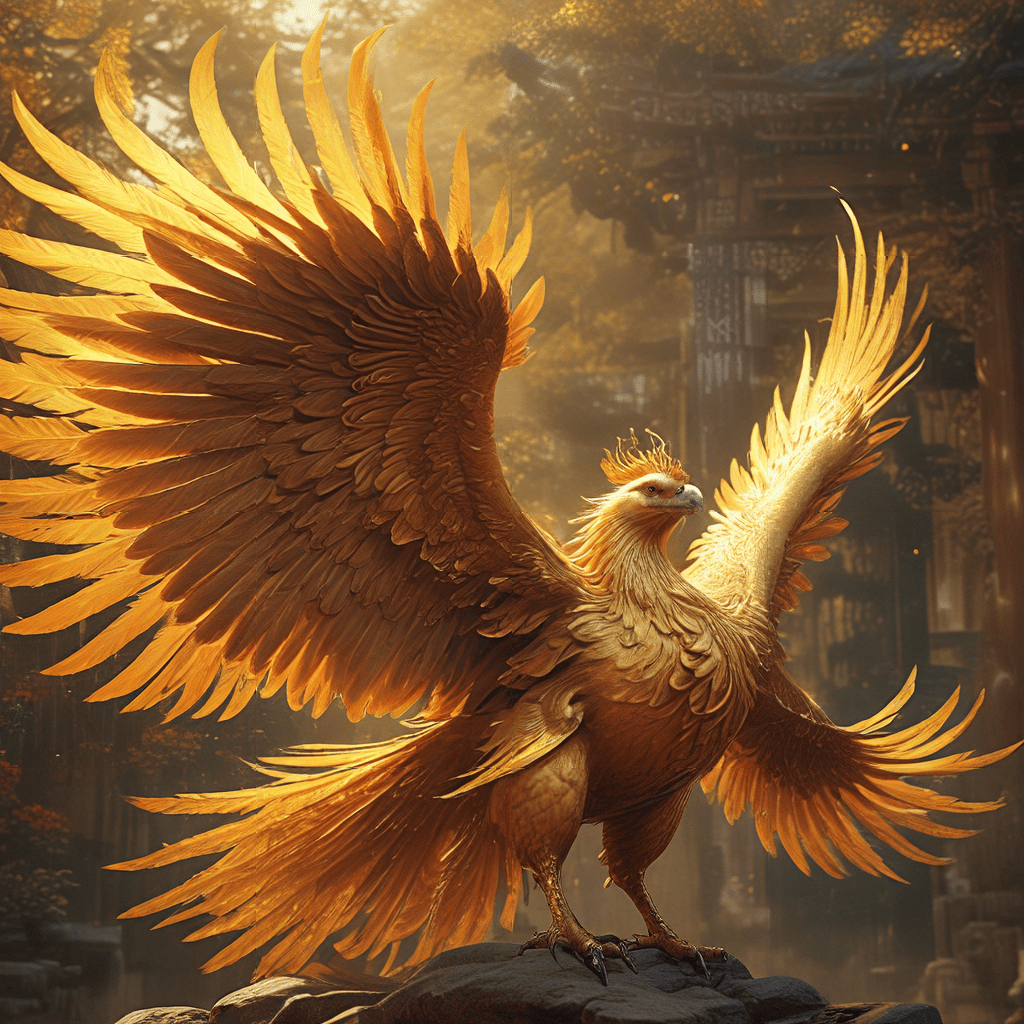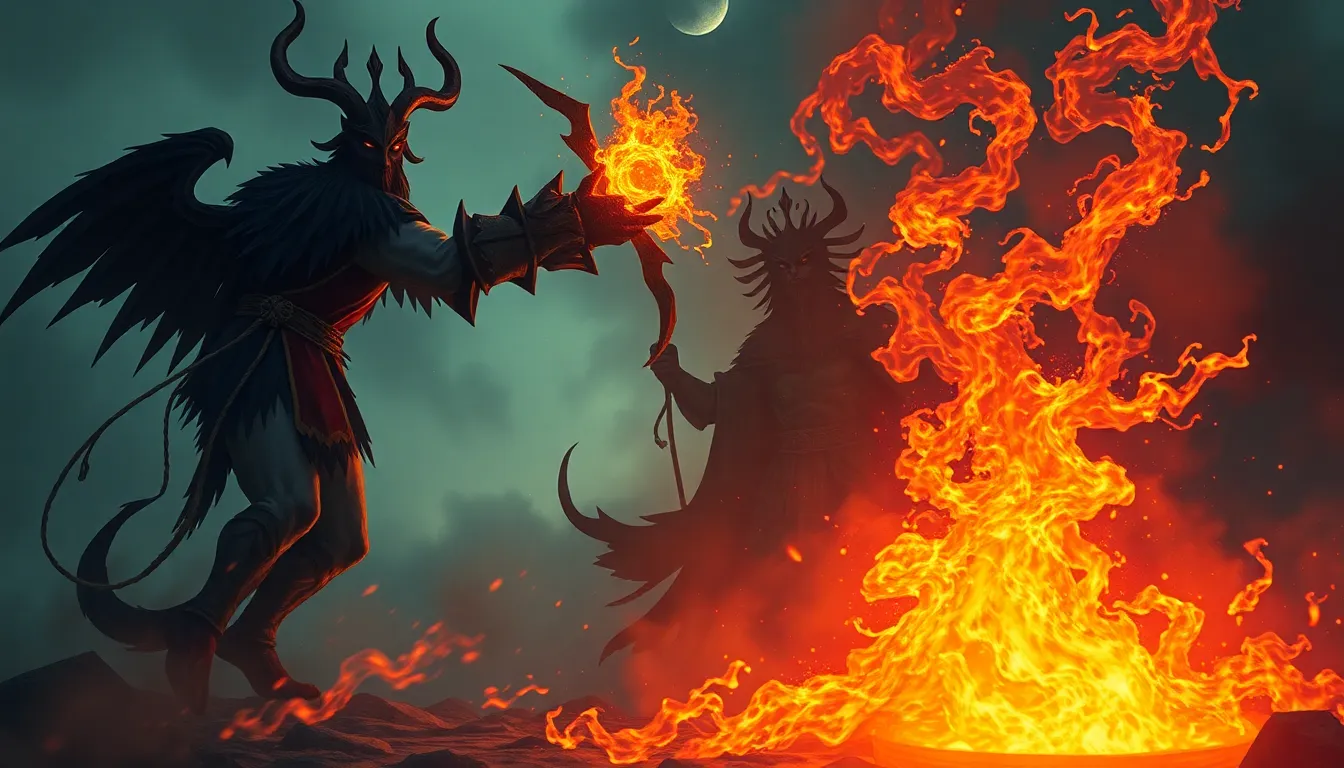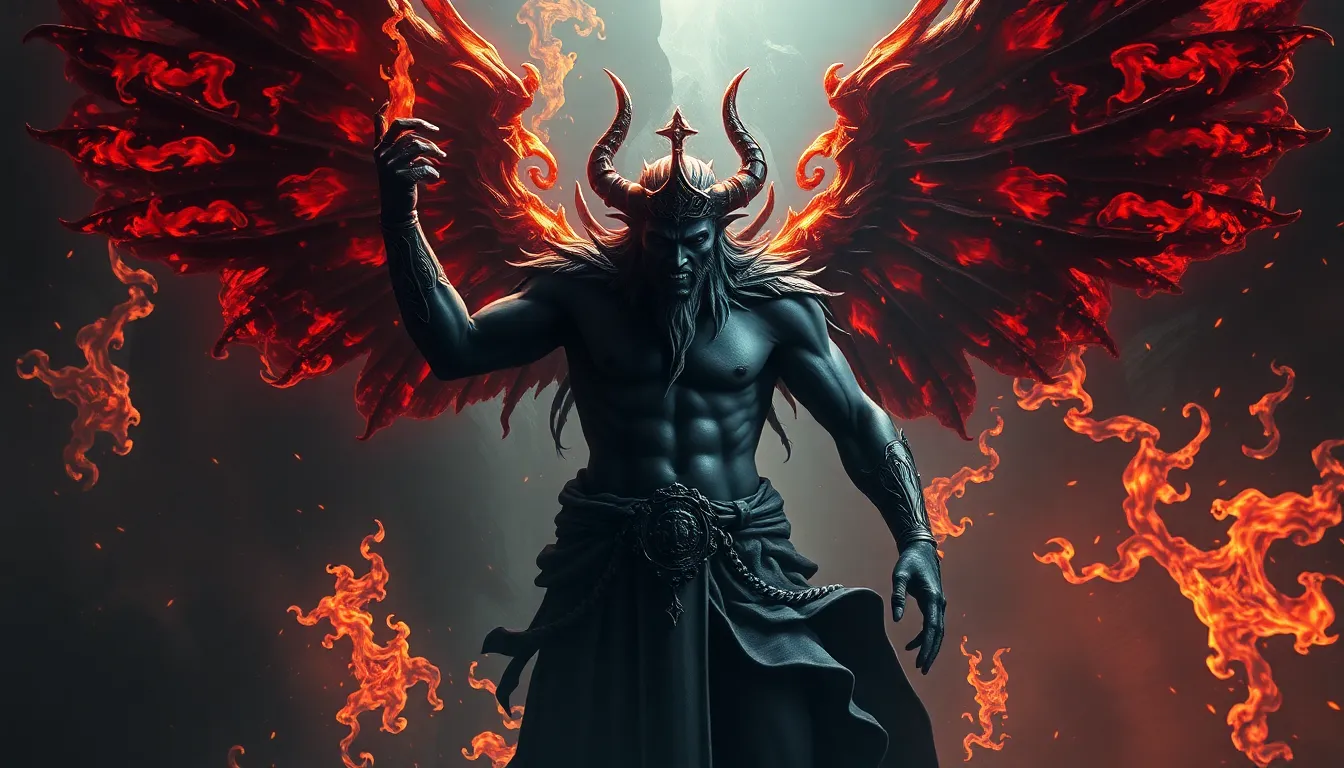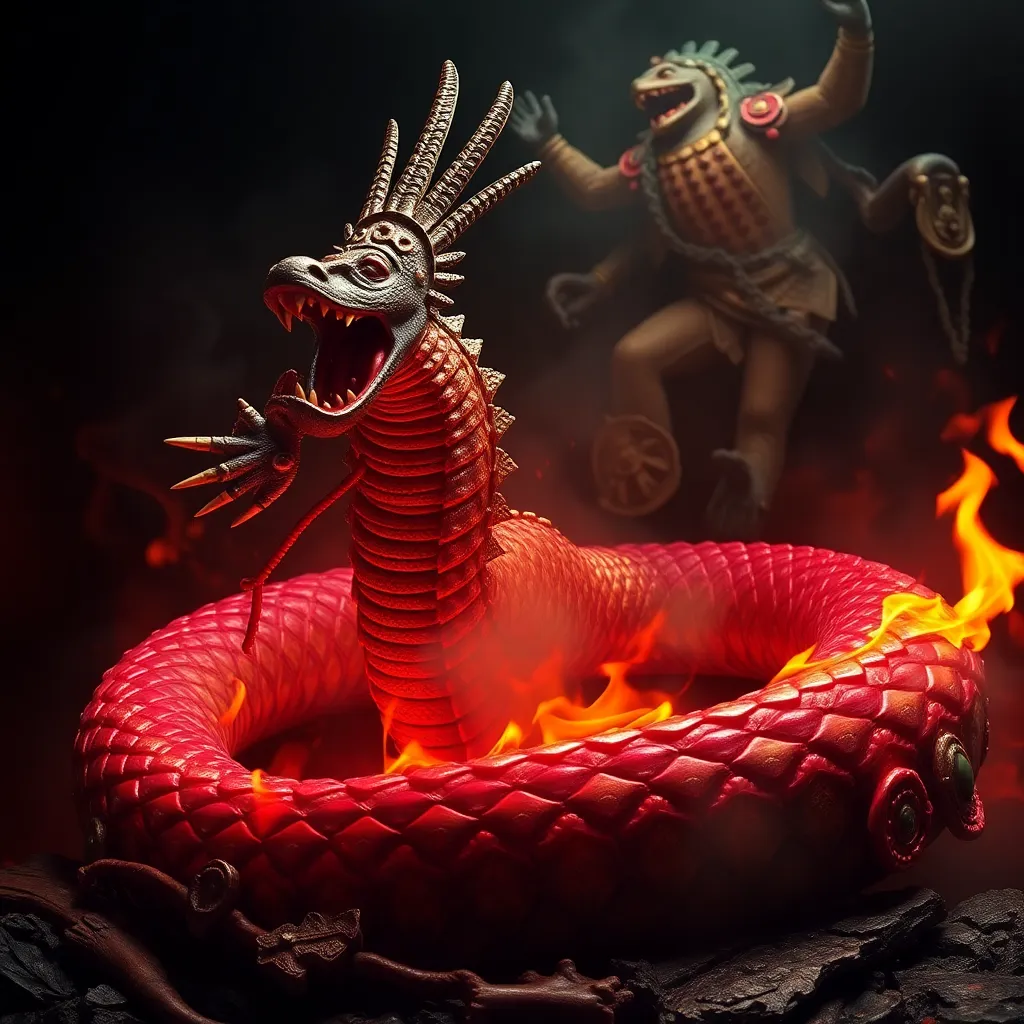The Legend of the Golden Phoenix: A Korean Myth
In the rich tapestry of Korean mythology, the legend of the Golden Phoenix stands out as a captivating tale of power, transformation, and the cyclical nature of life. This mythical creature, known as "Heungbu" in Korean, is not simply a bird but a symbol of hope, rebirth, and the enduring spirit of the Korean people. The story of the Golden Phoenix is deeply woven into the fabric of Korean folklore, providing insights into the cultural values and beliefs of the nation. Its presence is felt in literature, art, and even everyday life, where the Phoenix's imagery is used to convey messages of resilience and auspiciousness.
Origins and Significance
The legend of the Golden Phoenix finds its roots in ancient Korean beliefs, predating the introduction of Buddhism and Confucianism. The Phoenix is a creature of immense power, often depicted as a fiery bird with golden plumage, symbolizing the sun, light, and the transformative power of fire. The ancient Koreans believed the Phoenix to be a celestial being, a messenger of the gods, and a harbinger of good fortune. Its appearance was considered a sign of prosperity and a promise of a brighter future. The Golden Phoenix played a significant role in the development of Korean cosmology, representing the harmony and balance of the universe.
The Golden Phoenix in Korean Folklore
The Golden Phoenix is a prominent figure in numerous Korean folk tales and legends, each offering a unique perspective on its role and significance. In some narratives, the Phoenix is portrayed as a benevolent being that comes to the aid of those in need, often guiding lost travelers or bestowing blessings upon those who are virtuous. In other tales, the Phoenix is depicted as a powerful protector, defending the land from evil forces or guarding the sacred treasures of the kingdom. These stories highlight the cultural importance of the Phoenix, showcasing its ability to inspire hope, provide guidance, and protect those in need.
The Power of the Phoenix
The Golden Phoenix is renowned for its extraordinary abilities, which symbolize its divine nature and its connection to the celestial realm. It is believed to possess the power to control fire, regenerate itself, and rise from the ashes, symbolizing its immortality and the cyclical nature of life. The Phoenix's power of transformation is deeply intertwined with the Korean belief in the interconnectedness of all things and the continuous cycle of rebirth and renewal. The Phoenix's ability to rise from the ashes represents the triumph of hope over adversity, the resilience of the human spirit, and the power of renewal even in the face of destruction.
The Phoenix and the King
In some Korean myths, the Golden Phoenix is depicted as a symbol of royal power and authority, often associated with the king or the ruling dynasty. The Phoenix's presence at the court is seen as a sign of divine favor and a guarantee of the king's legitimacy. This association with the king strengthens the Phoenix's symbolism as a protector and a bringer of prosperity, linking the fate of the kingdom to the well-being of its leader. The Golden Phoenix, in these narratives, represents the king's responsibility to uphold justice, protect his people, and ensure the prosperity of the nation.
The Symbolism of the Golden Phoenix
The Golden Phoenix's symbolism extends far beyond its physical attributes, encompassing a complex web of cultural values and beliefs held by the Korean people. One of the most prominent aspects of its symbolism is its association with rebirth, renewal, and the cycle of life. The Phoenix's ability to rise from the ashes represents the enduring power of hope and the ability to overcome adversity. It signifies that even in the face of destruction, life can flourish anew, offering a message of resilience and optimism. The Phoenix also embodies the concept of transformation, representing the potential for growth and change. Its journey from ashes to majestic bird symbolizes the transformative power of time and the potential for individuals to change and evolve throughout their lives.
Furthermore, the Golden Phoenix is often associated with good fortune, prosperity, and auspiciousness. Its appearance is seen as a positive omen, a sign of peace and abundance. It is often depicted in Korean art and architecture as a symbol of good fortune and a protector against evil forces. The Phoenix's association with good fortune strengthens its symbolism as a bringer of hope and a promise of a brighter future. In traditional Korean culture, the Phoenix is often depicted alongside the dragon, representing a harmonious balance between yin and yang, the complementary forces that govern the universe. This pairing symbolizes the interconnectedness of all things and the importance of balance and harmony in life.
The Phoenix and the Cycle of Life
The Golden Phoenix's ability to rise from the ashes is deeply connected to the Korean belief in the cyclical nature of life. This belief recognizes that life is a continuous process of birth, death, and rebirth, a cycle that is both inevitable and essential for the continuation of life. The Phoenix's transformation from ashes to a majestic bird symbolizes the continuous flow of life, highlighting the cyclical nature of existence and the potential for rebirth even in the face of death.
This symbolism is also reflected in the Phoenix's association with the sun. The Phoenix, with its fiery plumage, represents the sun's life-giving power and its ability to bring light and warmth to the world. The sun's daily journey from dawn to dusk mirrors the cycle of life, with the sun's setting representing the end of one phase and its rising signifying the beginning of a new cycle. This connection between the Phoenix and the sun strengthens its symbolism as a representation of the cyclical nature of life and the continuous flow of time.
Theories on the Golden Phoenix
The origins of the Golden Phoenix legend are shrouded in mystery, with scholars offering various theories about its origins and evolution. Some scholars believe that the legend is rooted in ancient shamanistic beliefs, where the Phoenix represents a divine spirit or a powerful intermediary between the human world and the spirit realm. Others suggest that the legend was influenced by Chinese mythology, where the Phoenix is also a prominent figure, symbolizing renewal, immortality, and the embodiment of the feminine principle.
Regardless of its origins, the Golden Phoenix legend has evolved and adapted over time, reflecting the changing cultural and societal values of the Korean people. The legend has been passed down through generations in the form of folk tales, myths, and legends, enriching the cultural tapestry of Korea and providing insights into the beliefs and values of the Korean people.
Historical Context of the Legend
The Golden Phoenix legend is deeply interwoven with the historical context of Korea. The legend's emergence and evolution are closely tied to the political, social, and cultural forces that shaped Korean society. For example, during periods of political turmoil or natural disasters, the legend of the Golden Phoenix provided a source of hope and a promise of a brighter future.
The Phoenix's ability to rise from the ashes resonated with the Korean people during challenging times, offering a message of resilience and the potential for renewal even in the face of adversity. The legend also played a role in shaping the Korean national identity, serving as a symbol of the Korean people's enduring spirit and their ability to overcome challenges.
The Golden Phoenix in Contemporary Culture
The Golden Phoenix continues to be an enduring symbol in Korean culture, finding its way into contemporary art, literature, and popular culture. The Phoenix's imagery is often used in branding, advertising, and design, representing concepts of renewal, transformation, and hope. The Golden Phoenix is also a popular motif in Korean movies, television shows, and music, serving as a source of inspiration and a symbol of the Korean spirit.
The legend's continued relevance in contemporary Korean culture demonstrates its enduring power as a symbol of hope, resilience, and the cyclical nature of life. The Golden Phoenix serves as a reminder of the human spirit's ability to overcome adversity, adapt to change, and embrace the continuous cycle of life.
FAQ
Q: What is the Golden Phoenix in Korean mythology?
A: The Golden Phoenix, known as "Heungbu" in Korean, is a mythical creature symbolizing rebirth, transformation, and good fortune. It is often depicted as a fiery bird with golden plumage.
Q: What are the origins of the Golden Phoenix legend?
A: The origins of the legend are uncertain. Some believe it stems from ancient shamanistic beliefs, while others suggest influence from Chinese mythology.
Q: What are the key symbols associated with the Golden Phoenix?
A: The Golden Phoenix symbolizes rebirth, renewal, transformation, good fortune, prosperity, and the cyclical nature of life.
Q: What role does the Golden Phoenix play in Korean culture?
A: The Golden Phoenix is a significant symbol in Korean culture, found in folklore, art, and contemporary media. It represents hope, resilience, and the enduring spirit of the Korean people.
Q: How is the Golden Phoenix depicted in Korean art and literature?
A: The Golden Phoenix is often depicted in Korean art and literature as a magnificent bird with fiery plumage, symbolizing its power, beauty, and association with the sun.



